ICELAND:Day 4
Fjallsárlón, Jökulsárlón and Iceberg Beach
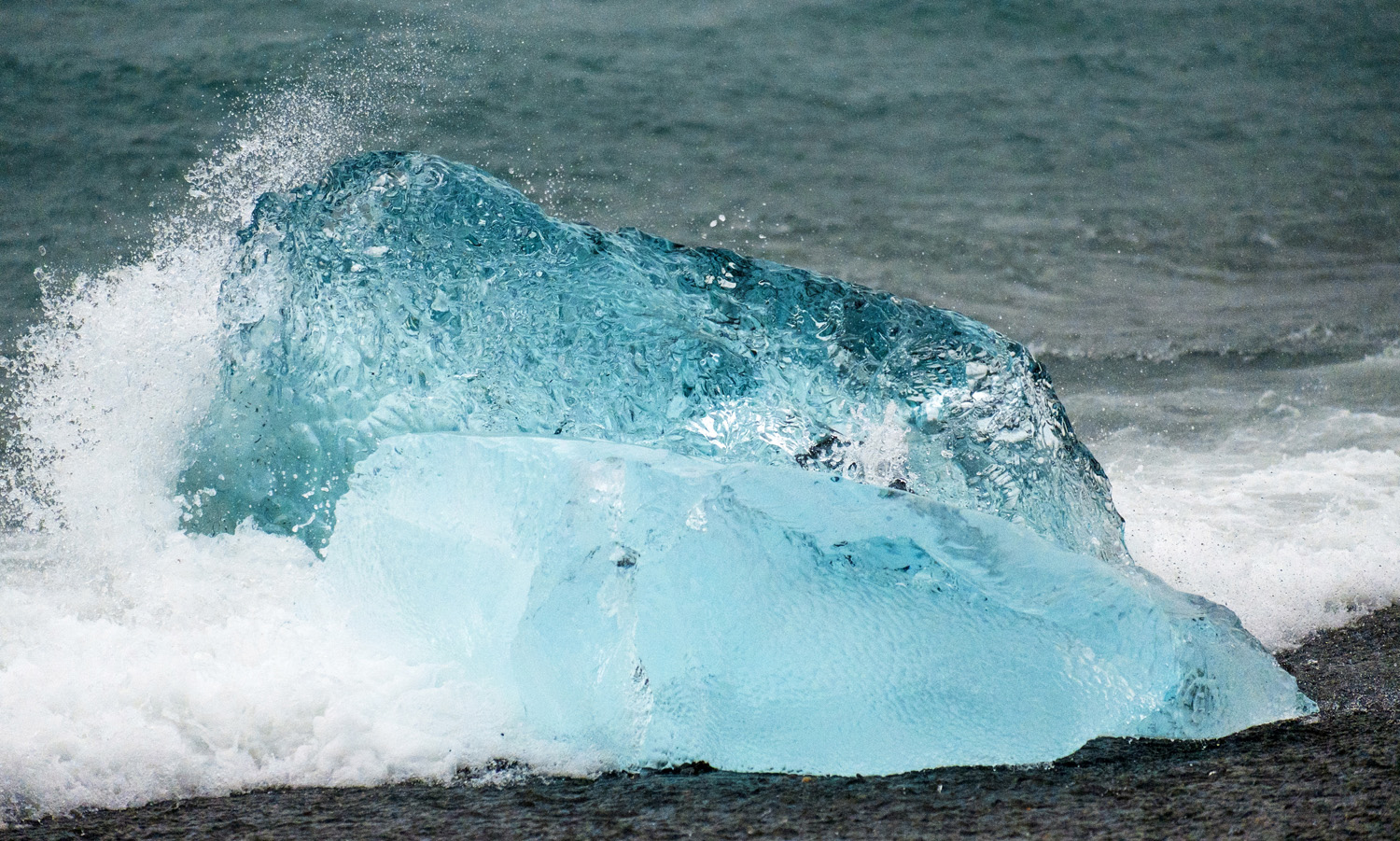
Text by Manol Z. Manolov | Images by Manol Z. Manolov and Nikolay Bratovanov © 2017
Human nature is such, that after any stroke of good fortune, man expects, often against his better judgement, that the trend will continue. And the world, unflinching and coldly realistic as it is, usually banishes such whims in a hurry.
Such was our state of mind at the beginning of Day Four. Underslept, but still fairly euphoric from the aurora display of the previous night, we were hoping against hope, and the sour musings of the Icelandic southern coast, that the weather will allow us to experience clear skies behind Iceberg Beach at sunset. Instead, we received one of the foulest displays of weather since our trip began. Morning found the brutal wind and sideways rain, companions of old, knocking on the doors and windows of our Dacia (knocking it all about, really) once again. Visibility was awful, and to top it off, a bitter cold front had began to permeate the already lovely atmospheric conditions.
It was time to once more turn ourselves into a bundle of layers. And to also say goodbye to any notion of exploring the icebergs at peace. By the looks of it, we would be lucky if we could steal a few mediocre photographs of the Jökulsárlón and Fjallsárlón lagoons and the neighboring beach. Shades of Gullfoss yet again. Regardless, in the name of progress and photography, it was time to hit the road again, come what may:
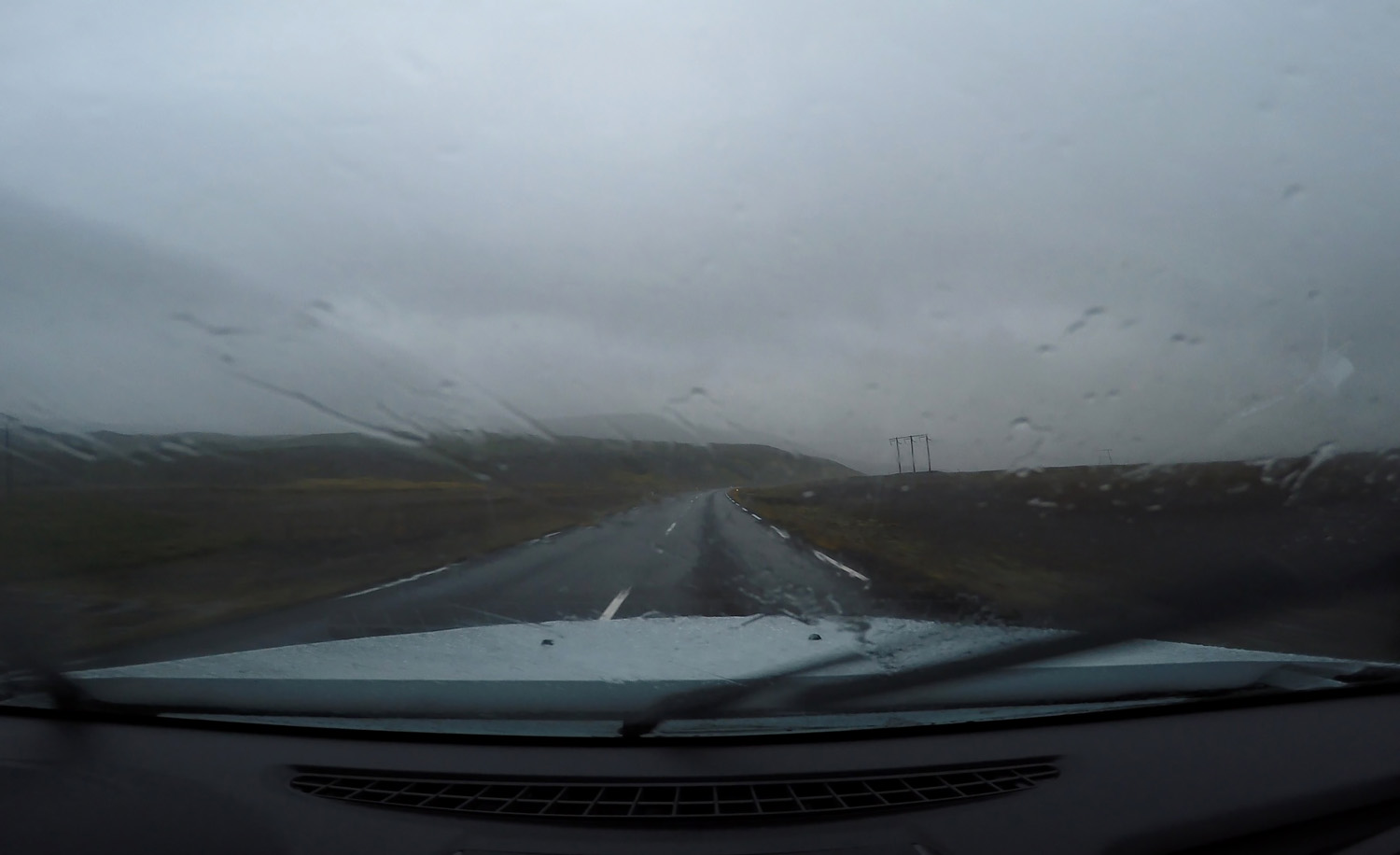
We pointed the Dacia south on the Ring Road, in the direction of the ice. The Fjallsárlón glacier lake would be our first stop amidst the unwelcoming grey that surrounded everything. As we approached the coordinates, (and since we were in the temporary possession of a 4x4 vehicle), we decided to make our outing a bit more adventure-like and veered off to the left into an F-road. The Icelandic equivalent of vehicular moonwalking, F-roads comprise of gravel, rocks and somewhat, but not always, flattened out mass of nature’s elements. Ours was now precariously (and not so smoothly), leading the way toward the photogenic frozen water.
After some wandering and crosschecking our offline maps app, we reached our objective at last. It did not project a friendly vibe at all:
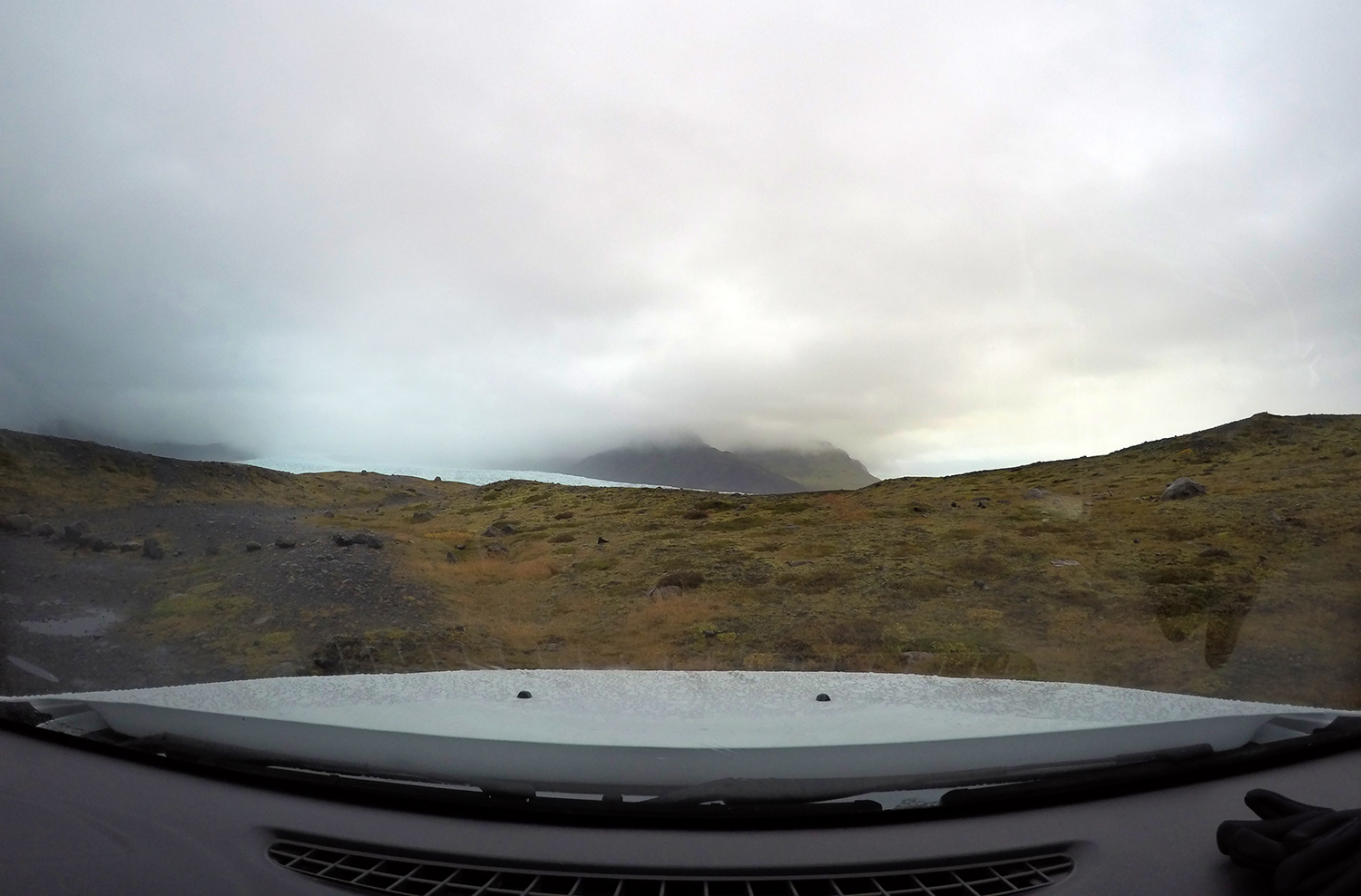
When the wind is so bad that it’s hard to even get into the poncho one needs to keep the rain out, you know you’re in for a fabulous time..
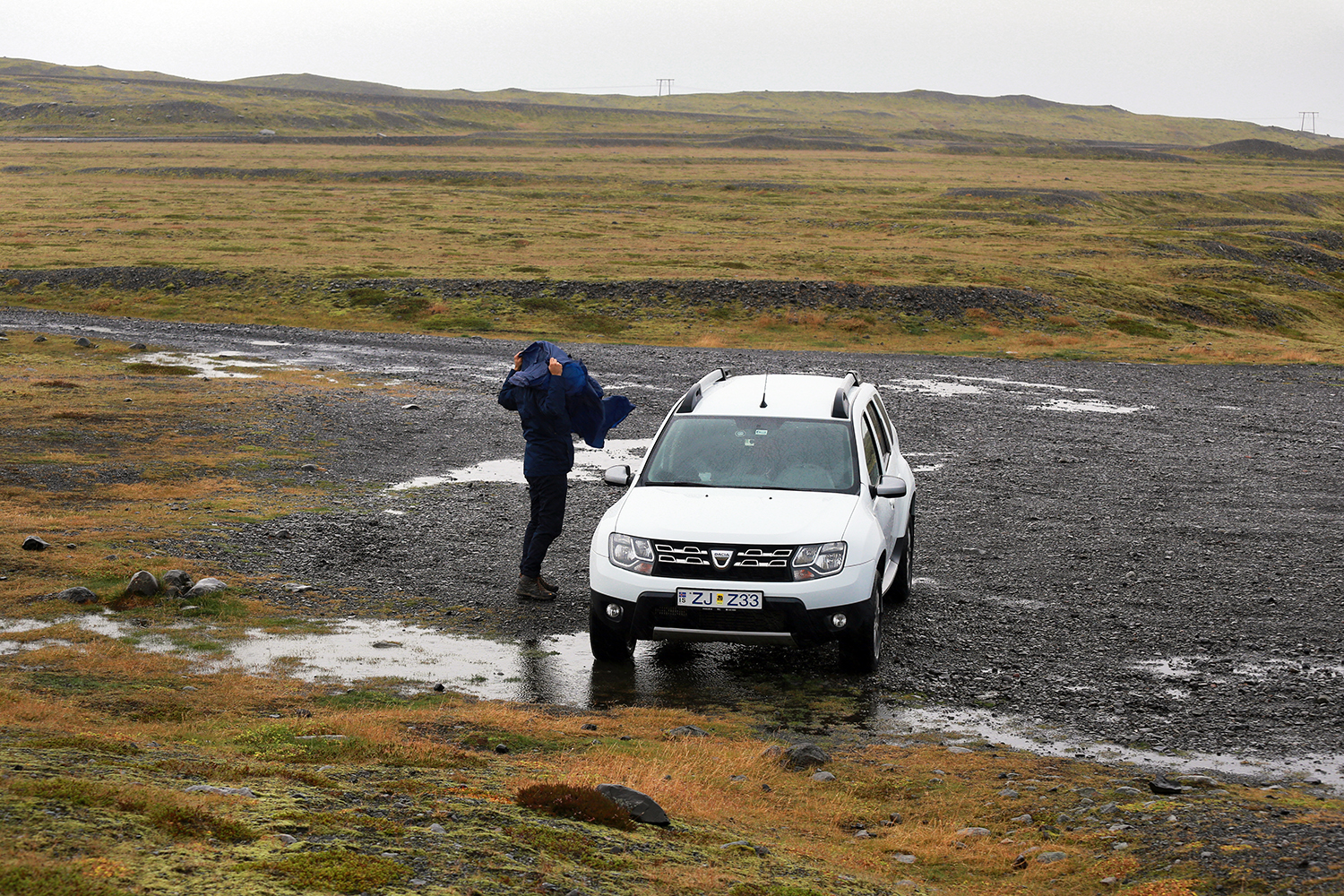
Even amidst the awful weather, however, it was easy to see that the glaciers of Fjallsárlón presented a beautiful sight:
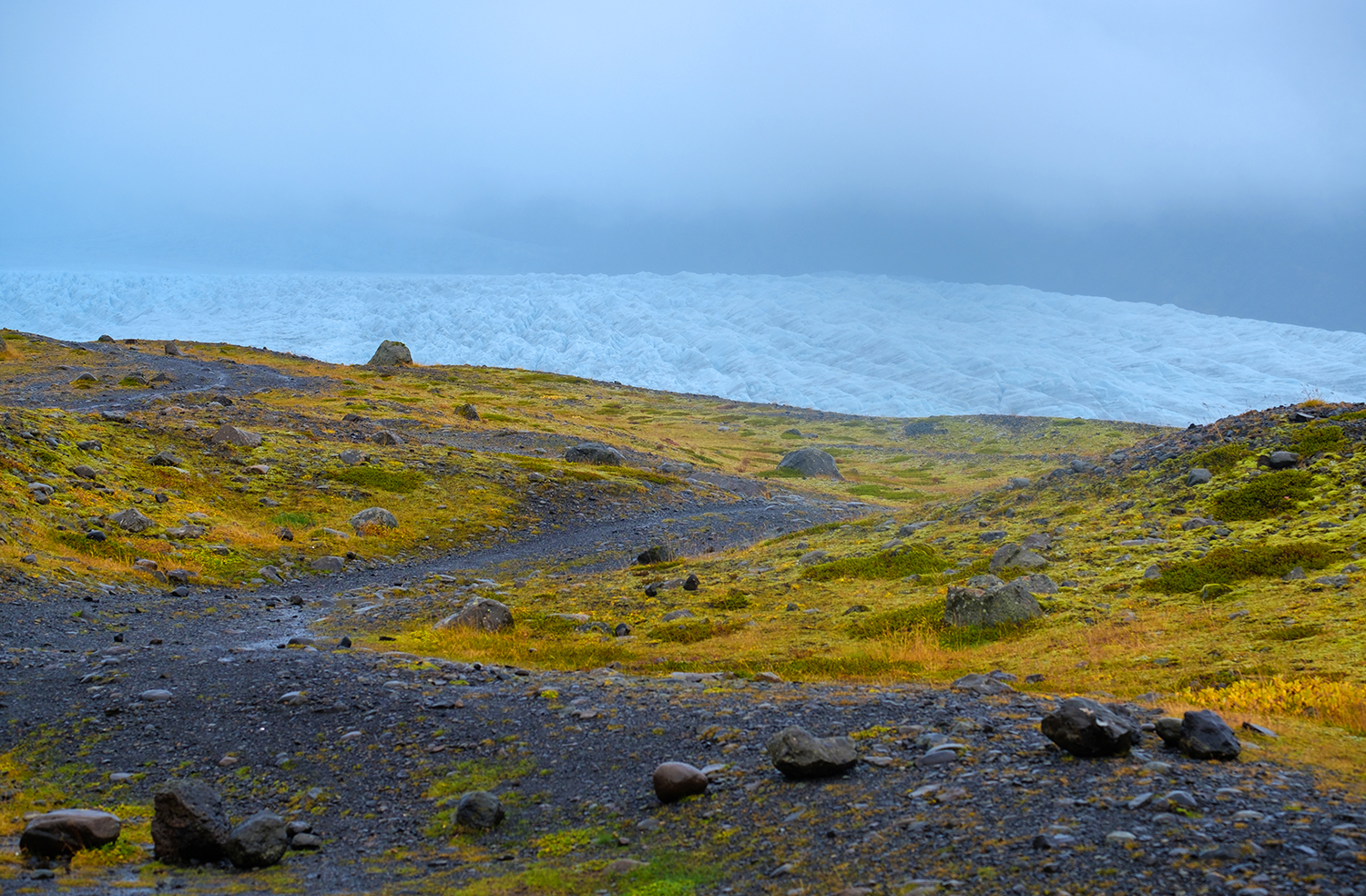
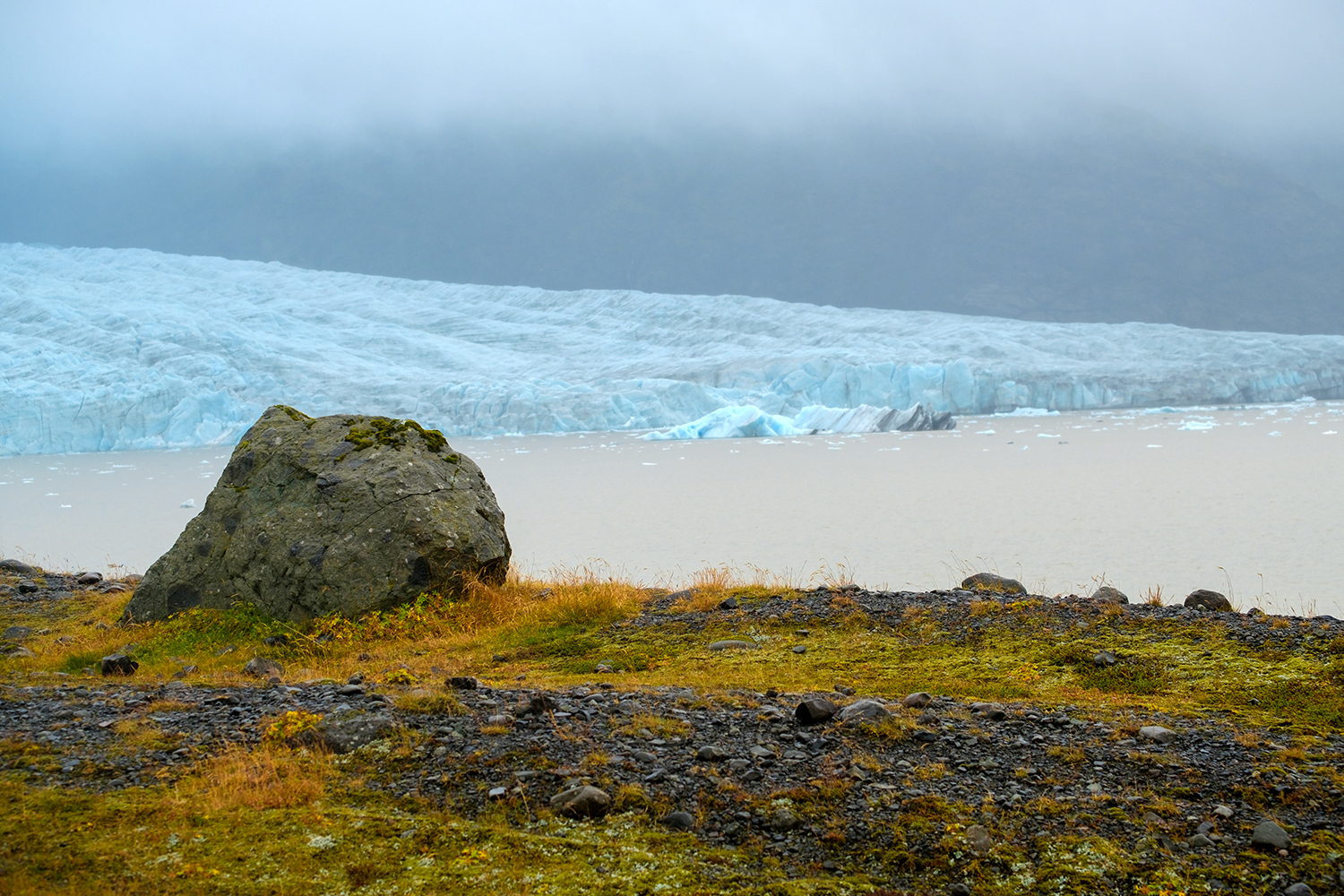
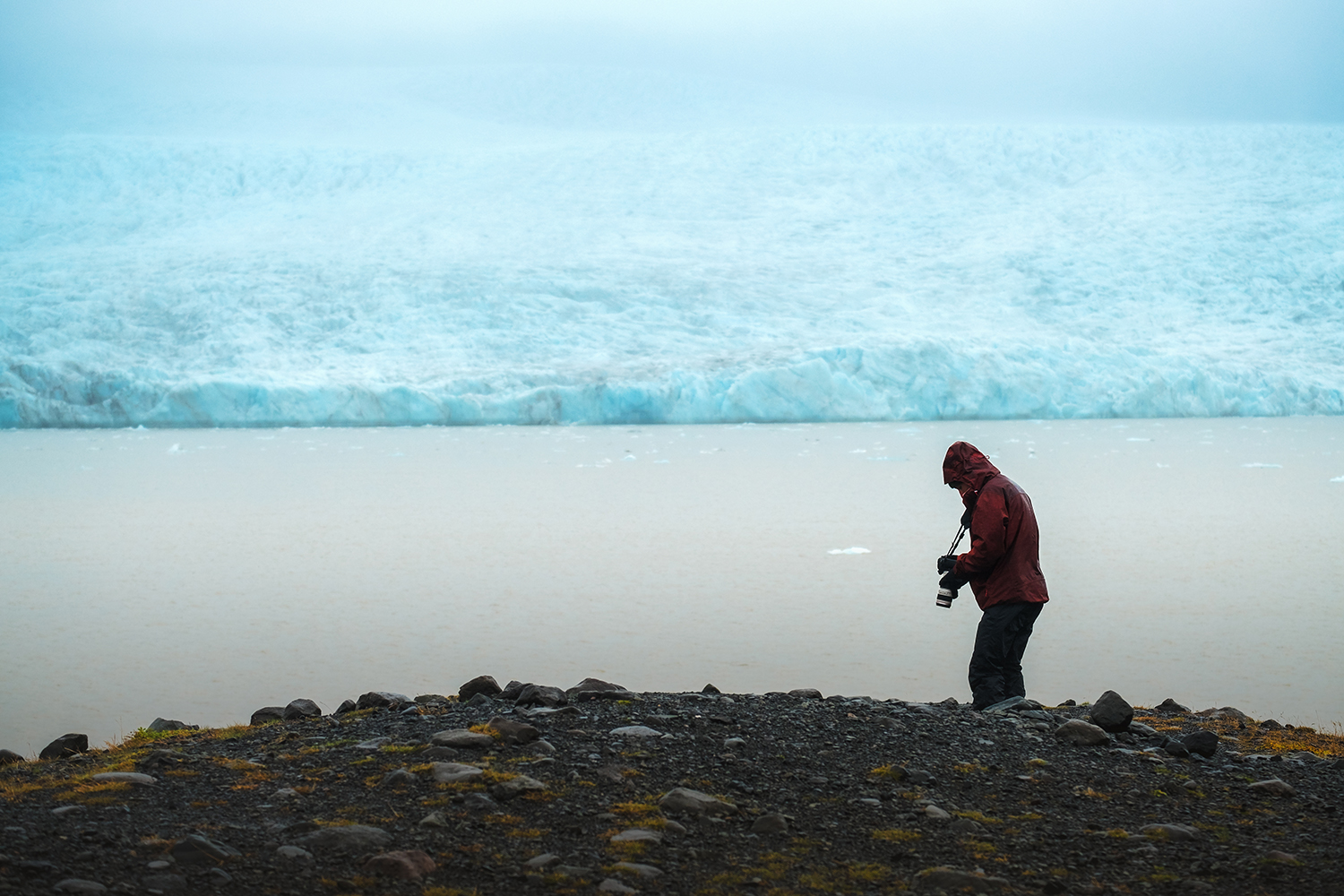
Of course, only the most important of photos had to be taken, as the risk to the expensive gear was just too great:<
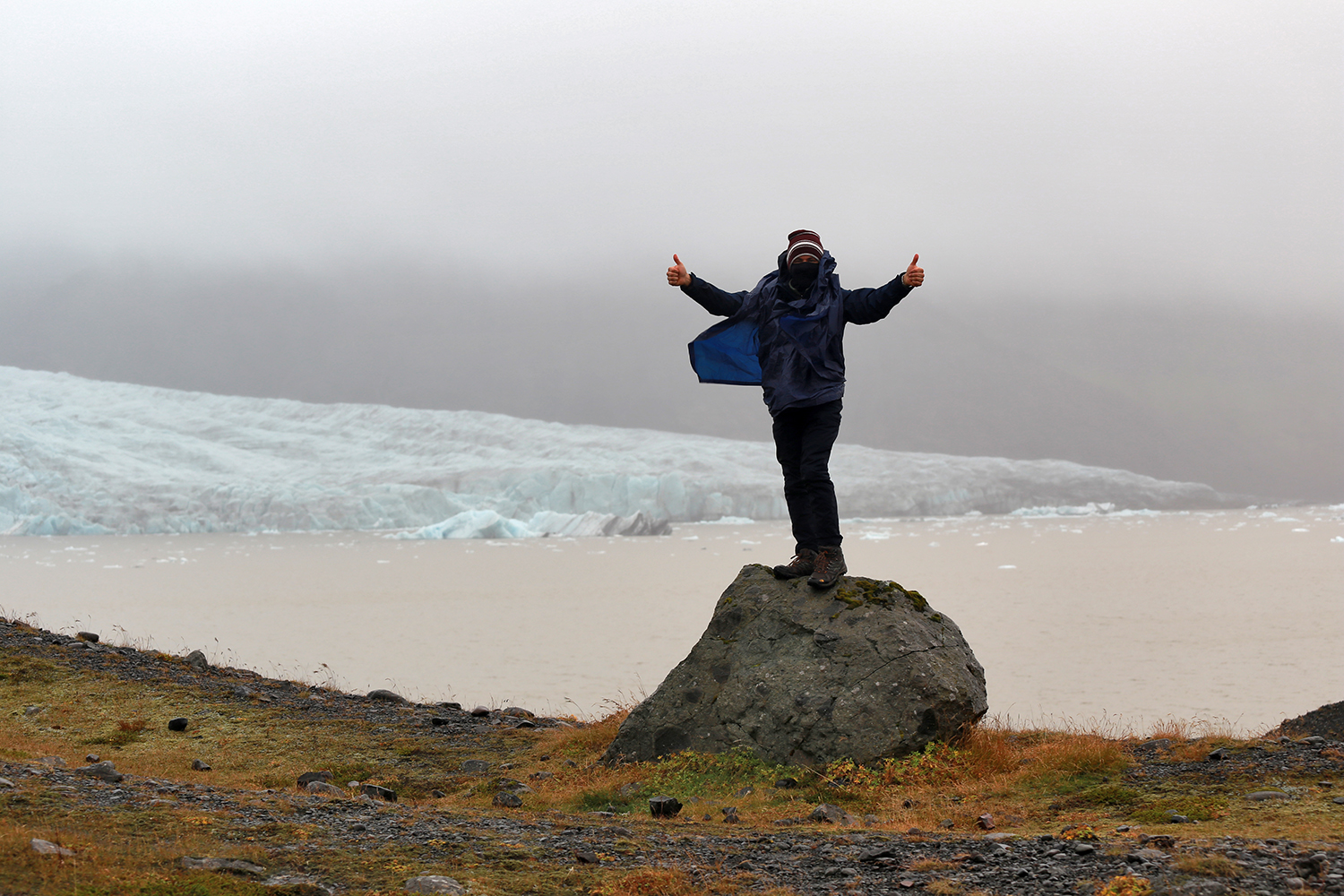
Vividly blue bits of glacier were floating about in the murky water or lay stranded on the shore:
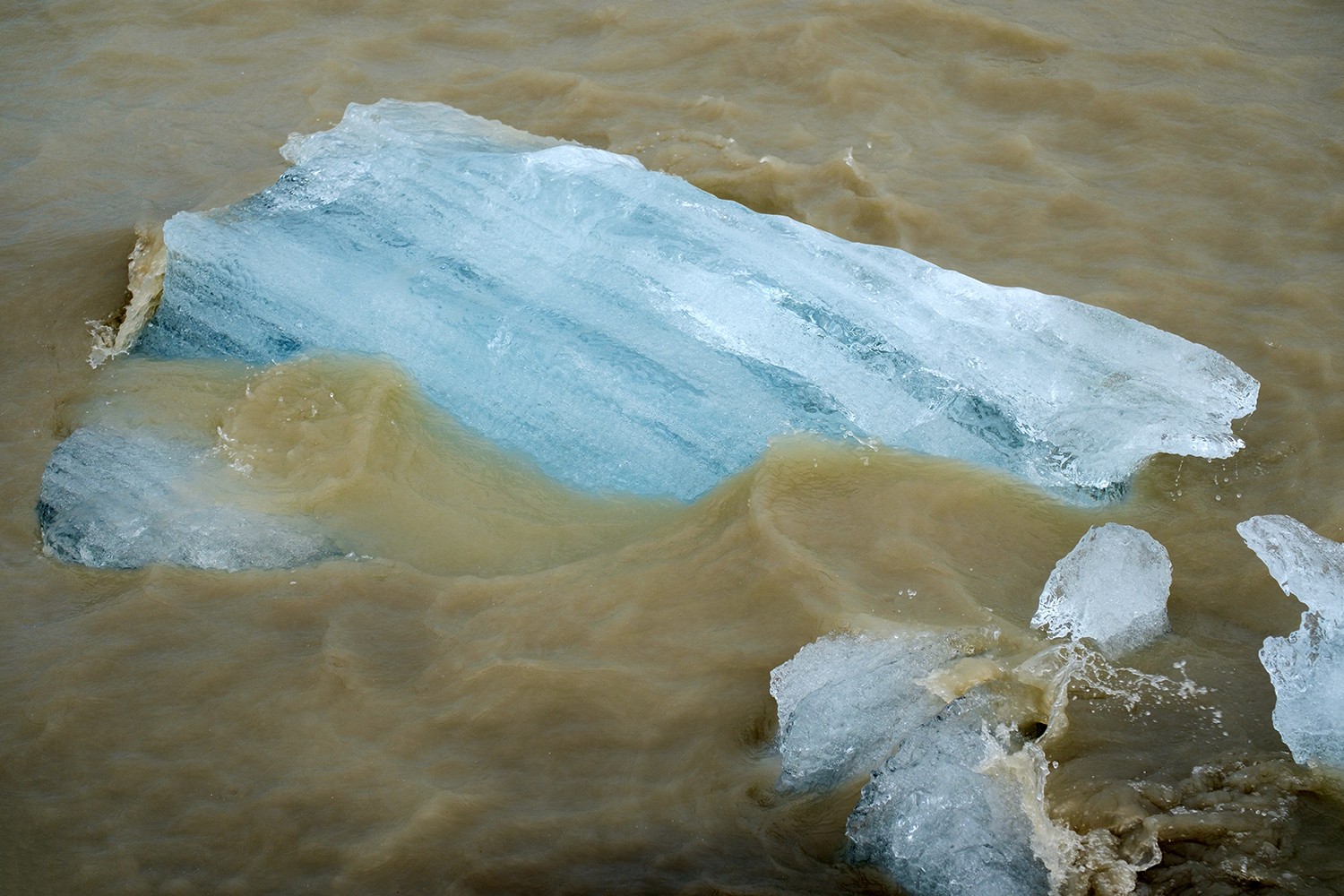
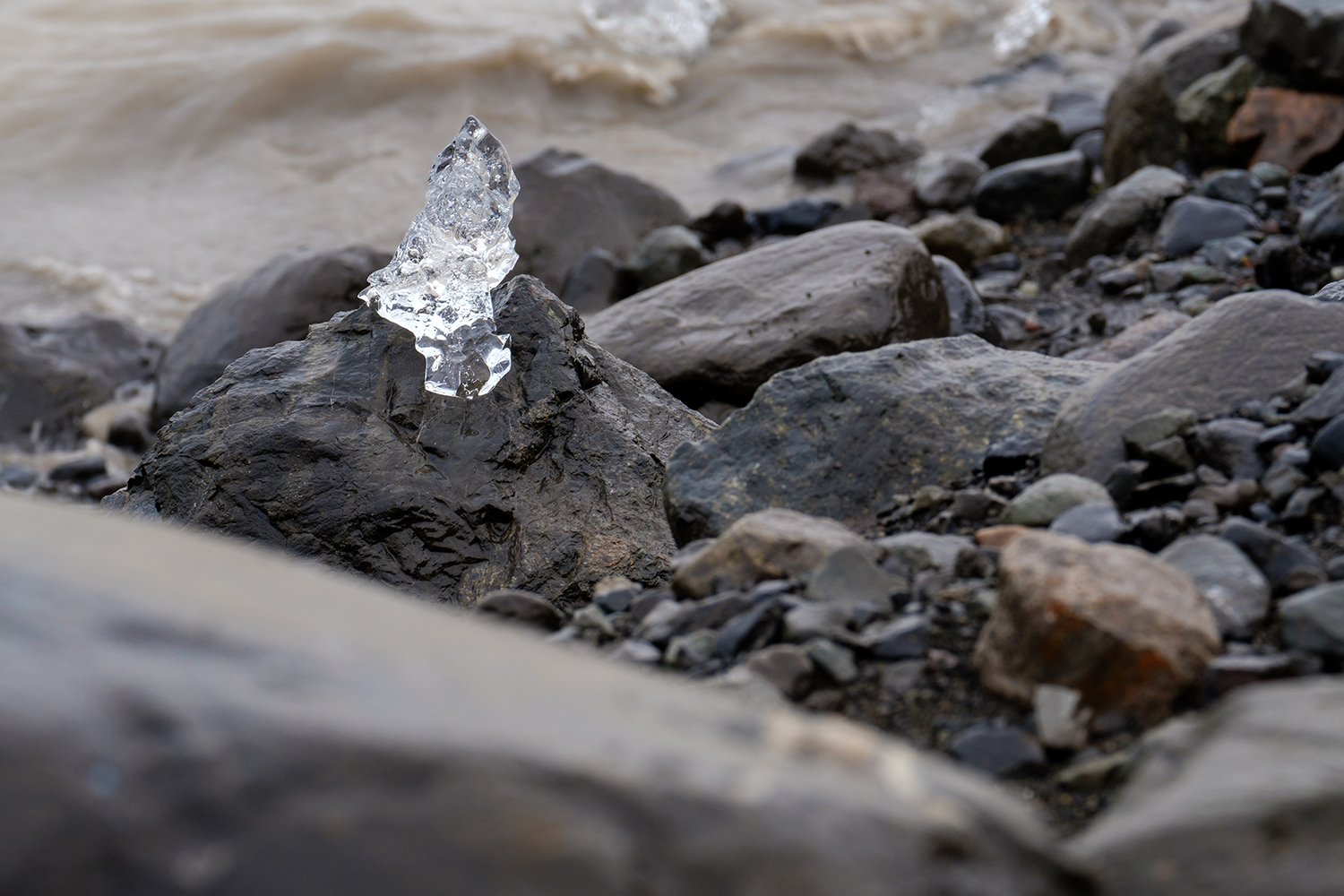
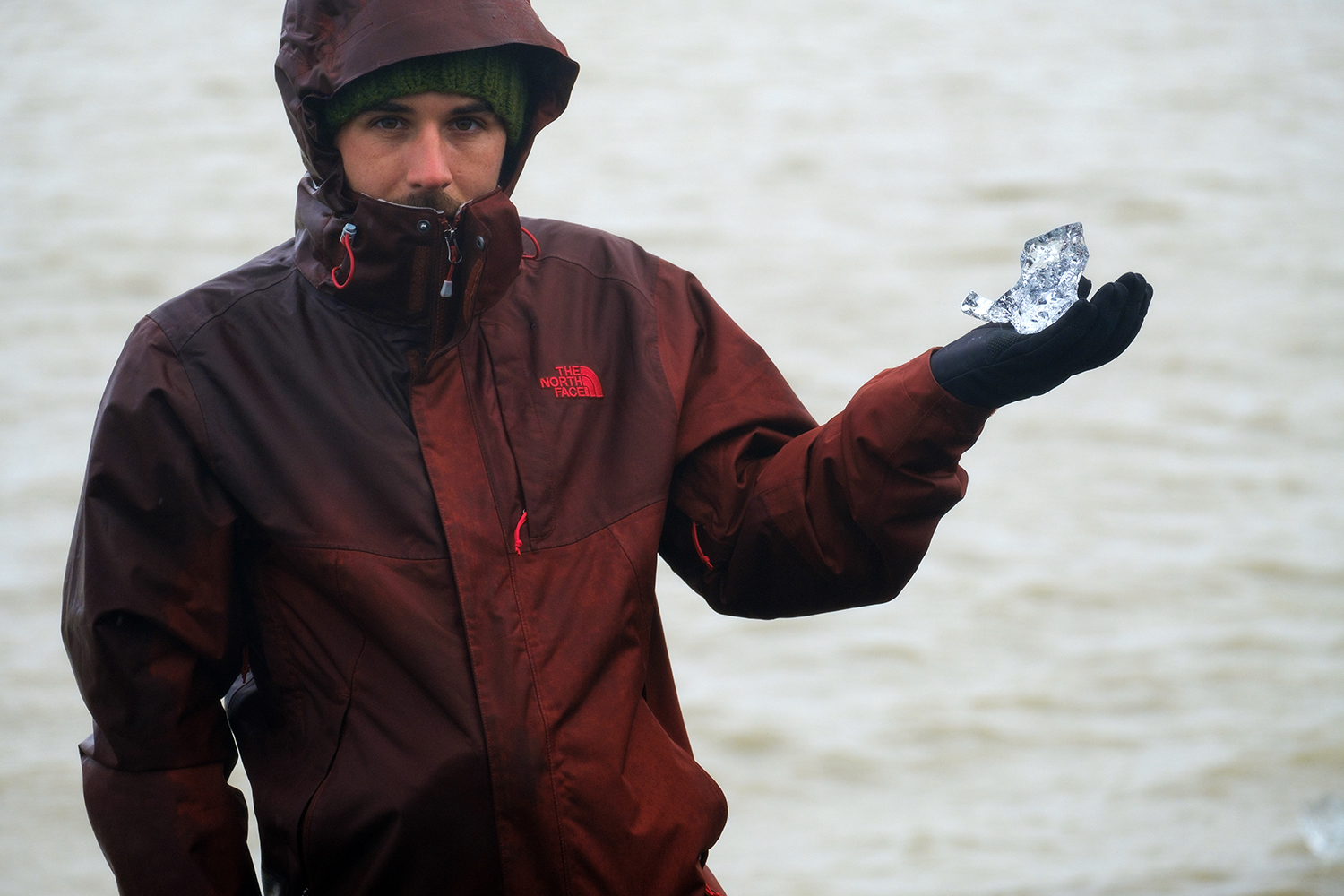
But it was difficult to be outside. Even in our best winter and wet-weather gear, we were completely soaked in a matter of minutes. We retreated to the Duster to dry the cameras out. Our prospects for getting any usable photos of the glaciers at Jökulsárlón were getting dimmer by the moment. There were no rays of sunshine bursting through the gloomy sky and if the conditions were anything like what they were here at Fjallsárlón, we were not in for a fun time. Ever the optimists (on occasion, anyway…) we noted that the poor weather had at least driven all the tourists away.
The Jökulsárlón lagoon lies only a few miles east from Fjallsárlón, which we were now departing. Having reduced our expectations to a mere sliver of what they were the night prior, we emerged from the muddy F-road and headed toward the larger lagoon. We soon sighted its outline on the left of the road and pulled the car over to the right, into an improvised parking lot area. We weren’t going the lagoon’s way just yet. Hanging on to slim hopes, we desired to see for ourselves the state of the fabled Iceberg Beach. And in return for our faith, Iceland decided to offer us its worst. At least the worst we had seen so far on our brief trip. It was a little past 11am local time at one of the most popular attractions in all of Iceland, and the tourists, the ubiquitous tourists whose stout selfie sticks even the sourest of weather had thus far failed to tame, were nowhere to be seen. The beach was empty of all presence of life, and yet, in the midst of it all, vibrantly alive. The crosscurrents of wind whipped the raindrops all about, creating a flurry of water that left no part of anything dry. Raging waves rose into foaming crests before rushing forth to attack the dark sands of the unfortunate beachhead. And the fish. Well, they had simply ceased to be. Upon the ground, amidst the chunks of ice that instead of beautiful were now grim and colorless, perhaps hundreds of what looked like haddock, lay stiff and motionless. The force of the storming ocean was such, that even its regular occupants could no longer withstand it. The severe and sudden ejection from their home had also consigned them to the realm of the non-living.
It was all very surreal to behold, and it was easy to wax poetic while observing from the shelter of the car. Surely it was madness to venture outside. But we had to. Driven by the foolish whims that often posses people with cameras, and bolstered by the until-now-unnoticed presence of people (crazy tourists!) further down the beach, we emerged, once again, into the towering storm.
On our left, we noticed the channel through which Iceberg Beach receives its deposits from the mother lagoon. Crazy tourists upon it, of course…
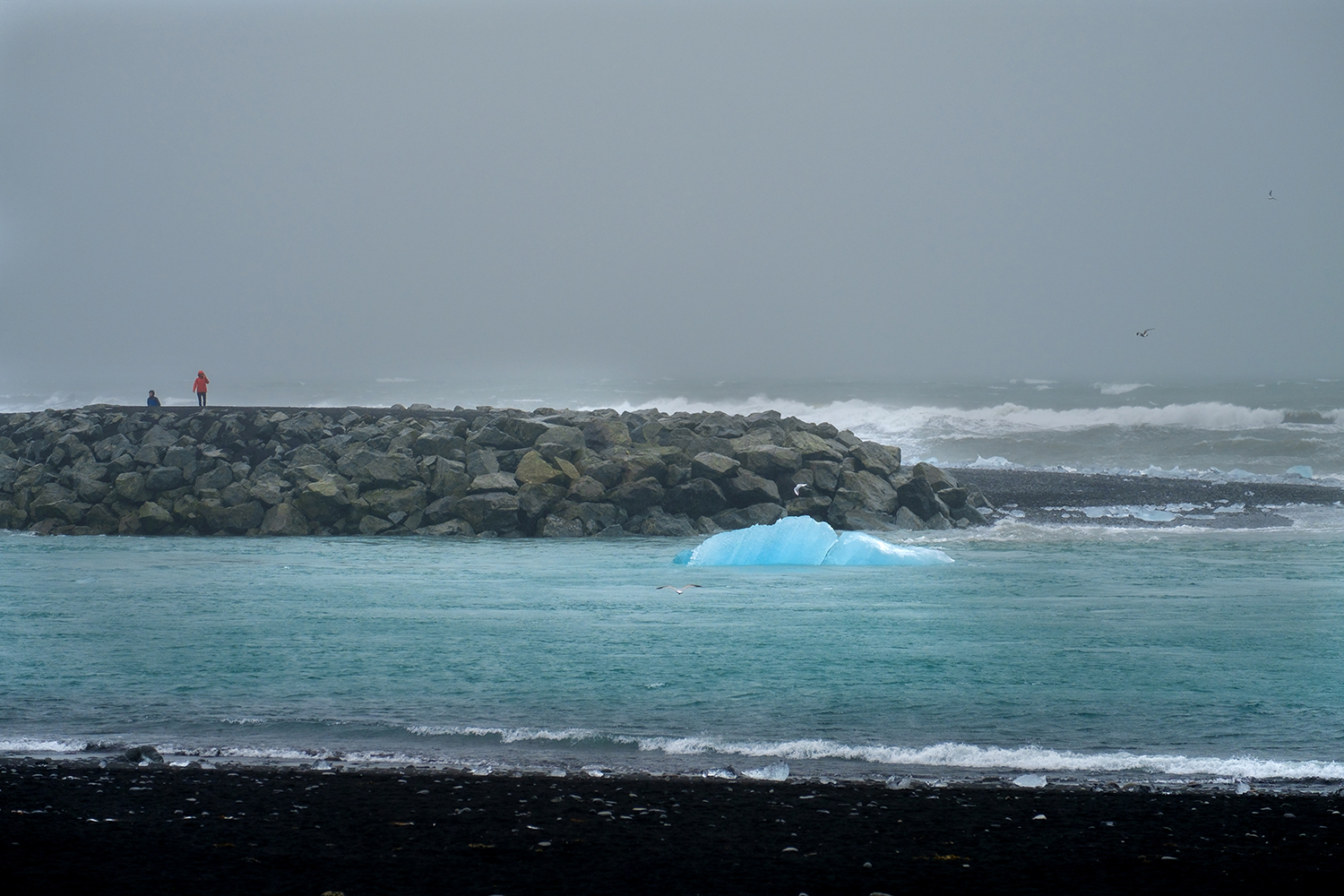
The victims of Icelandic fall lay scattered about, young and old, mouths open as if gasping for a last breath of life, now long gone:
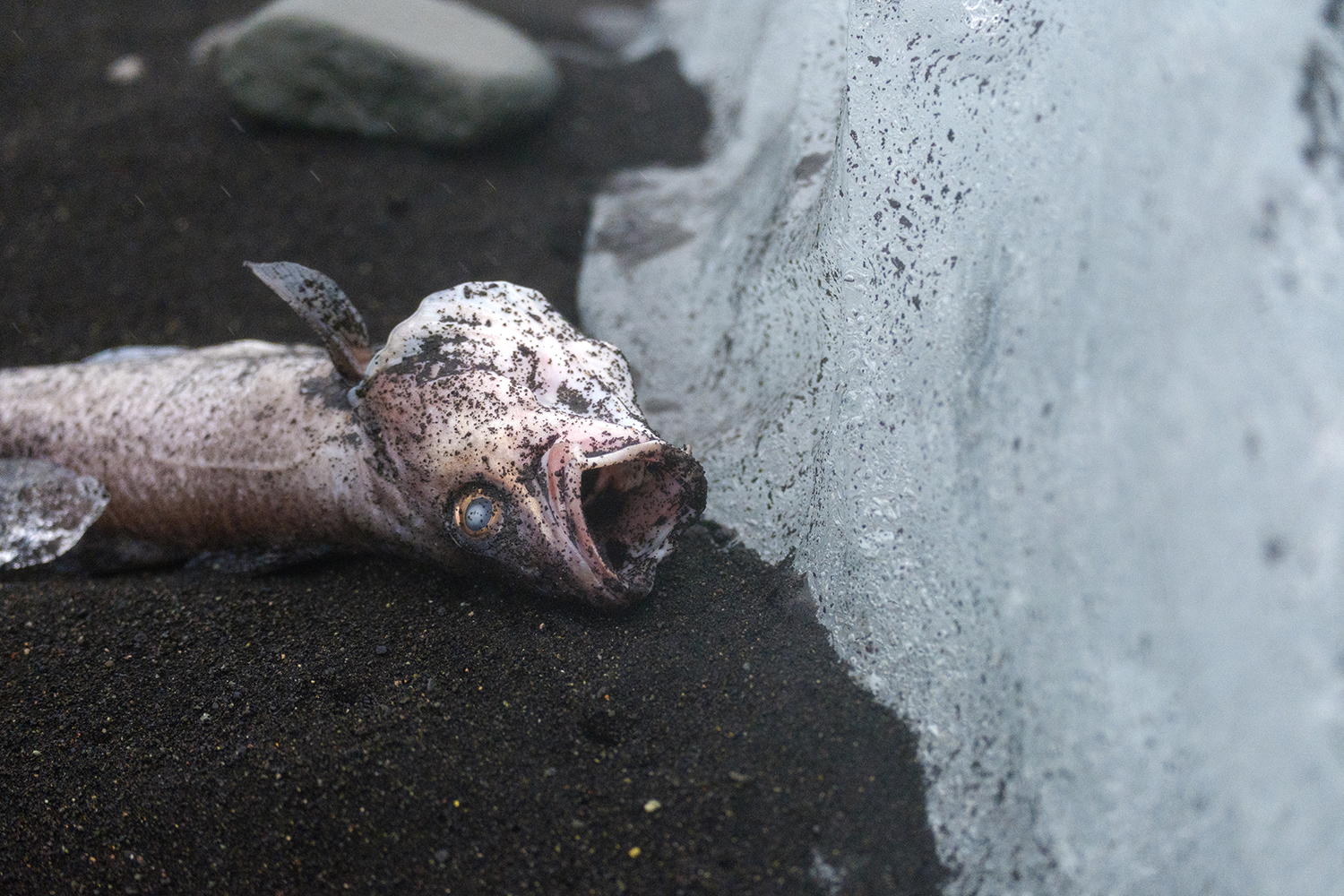
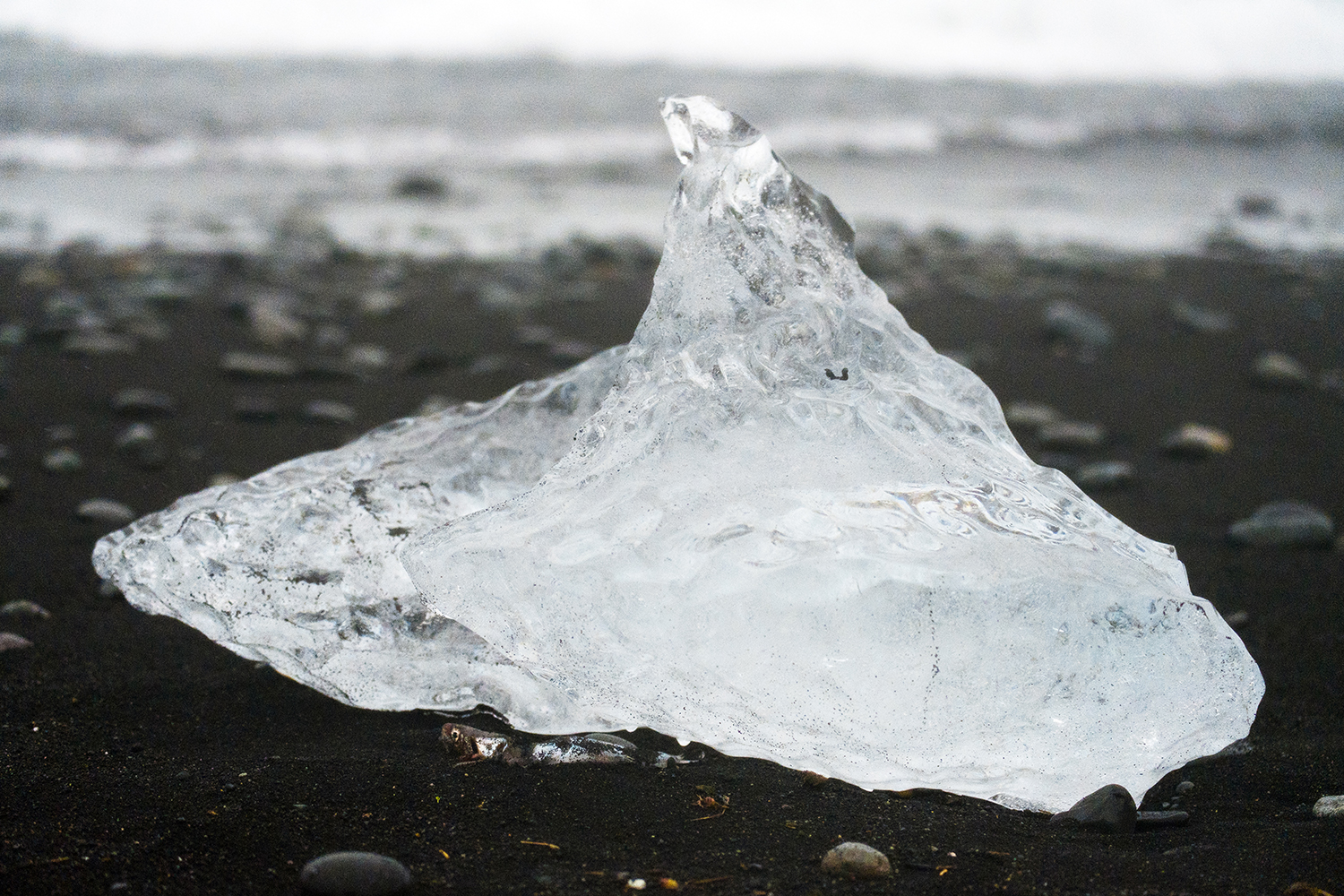
And more crazy tourists joined us, the crazy photographers, in trying to salvage whatever small bits of the Iceberg Beach experience they could:
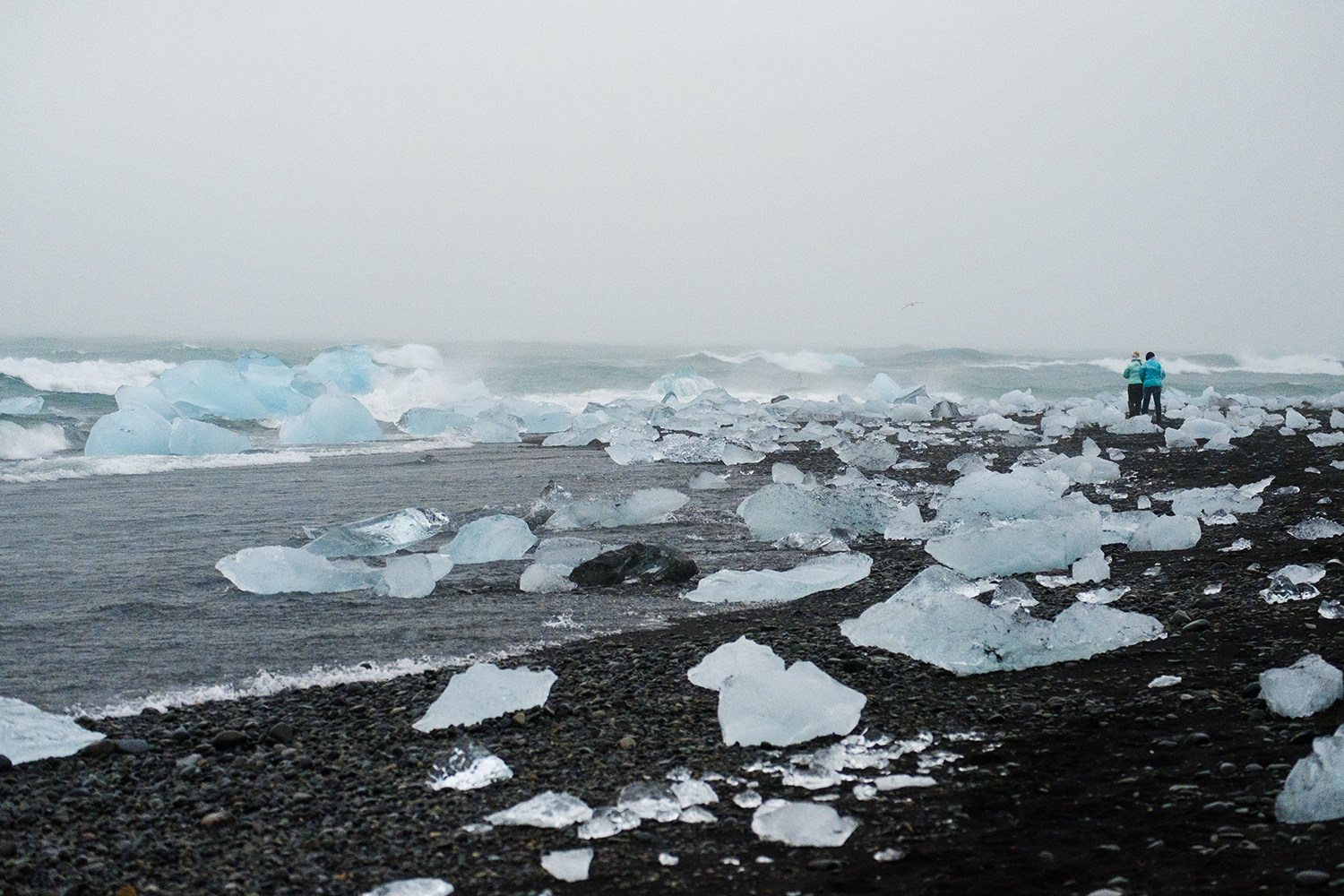
We scampered about, frantically taking whatever photos we could, before the cameras were completely drenched. A microfiber cloth tucked away in a nearby pocket proved to be a lifesaver, as the lens filter had to be wiped after every exposure, to remove the raindrops. In between all of this, we actually managed to get some good (considering the conditions) shots:
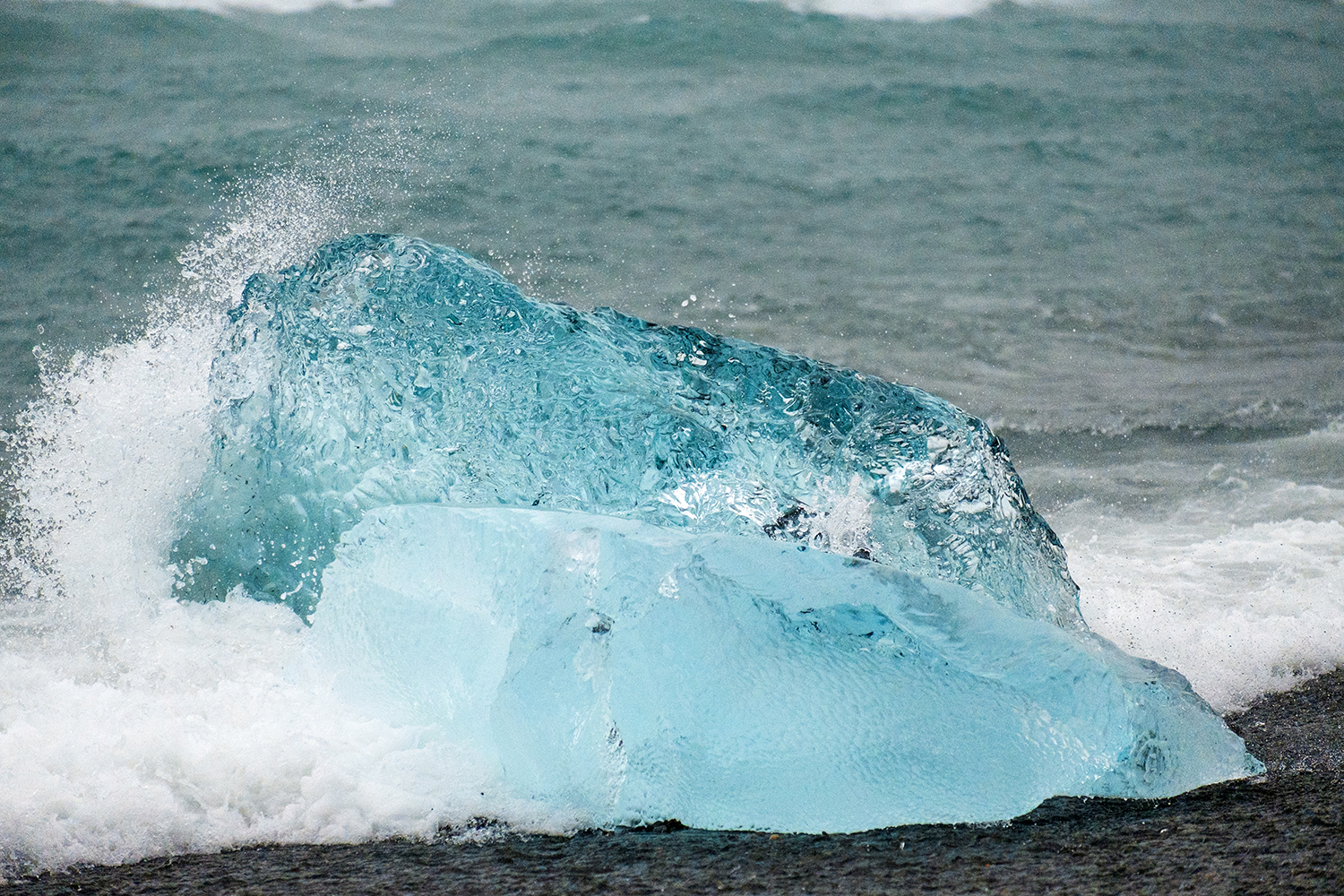
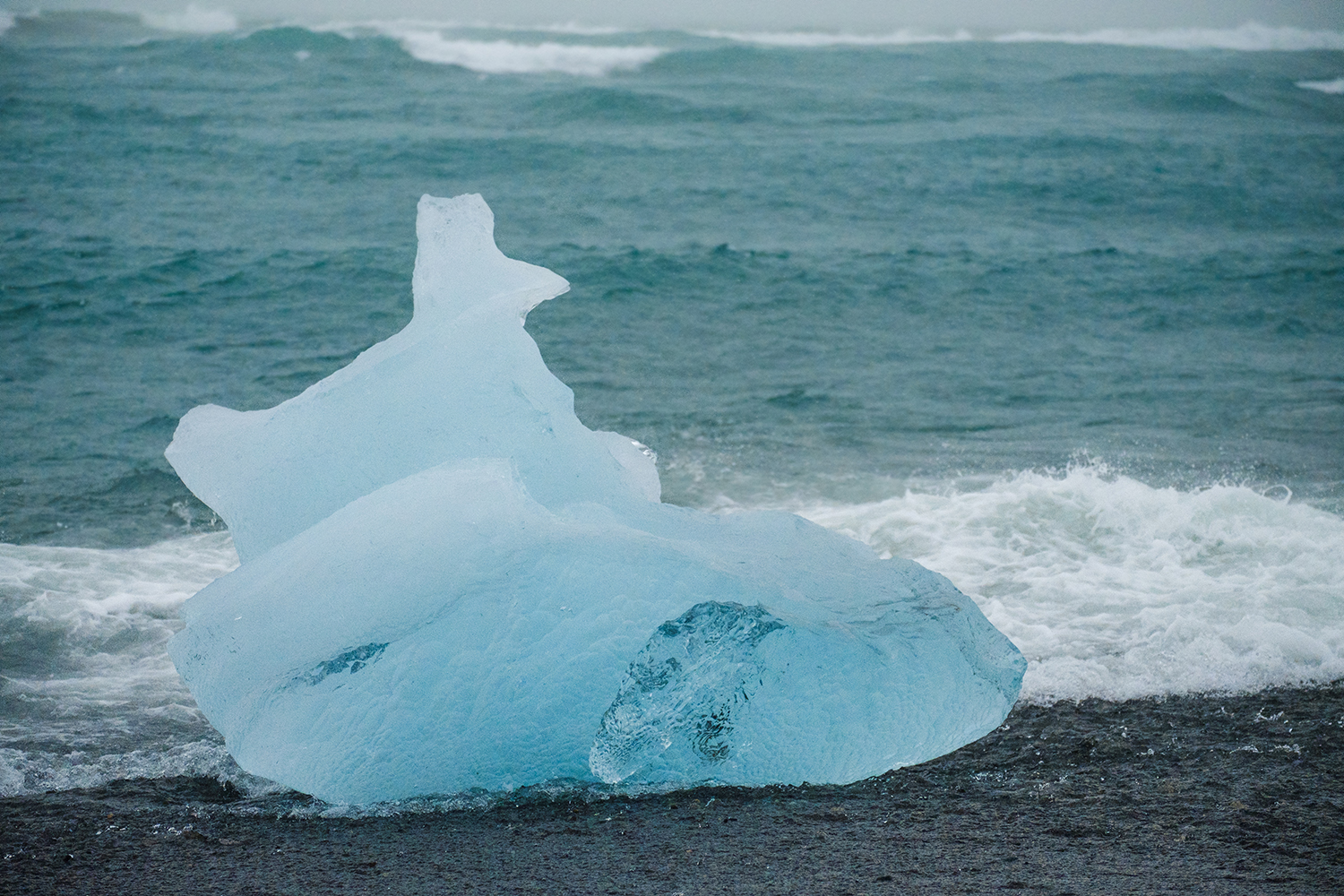
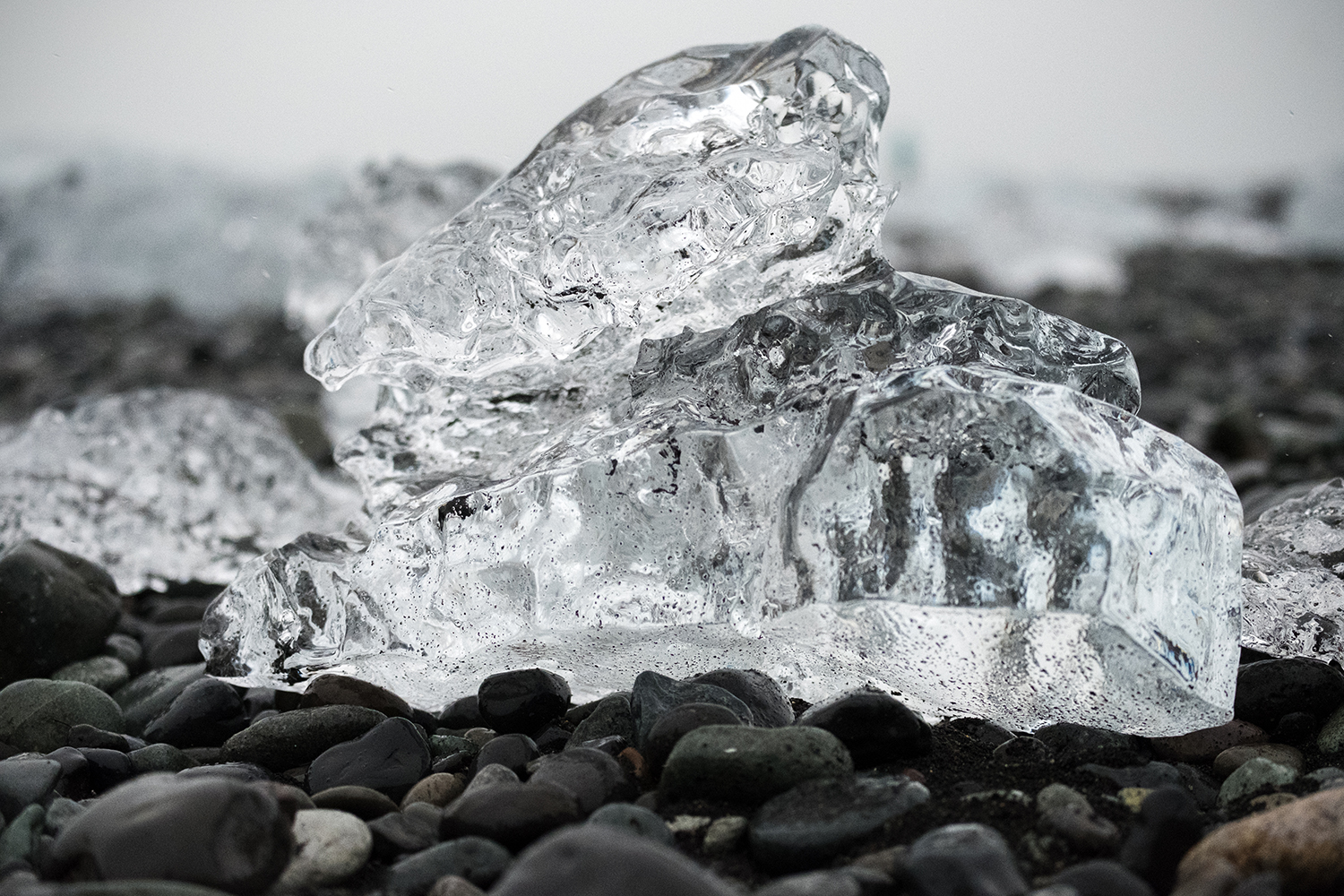
We just had not lucked out with the weather. Not one bit. But the immense photographic potential of the spot was easy to see:
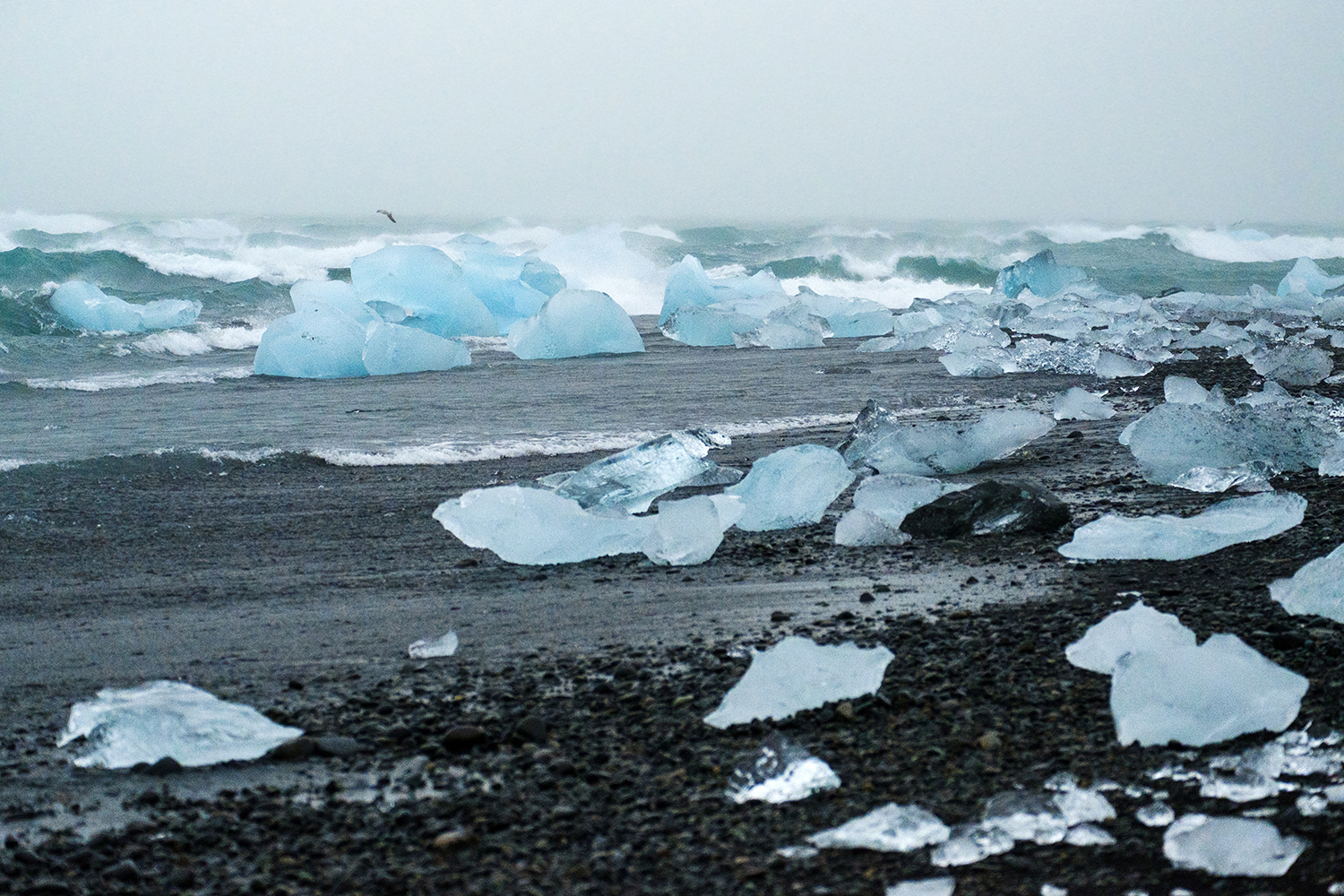
Amidst the madness, we found consolation in playing tourist ourselves, even if for a little bit:
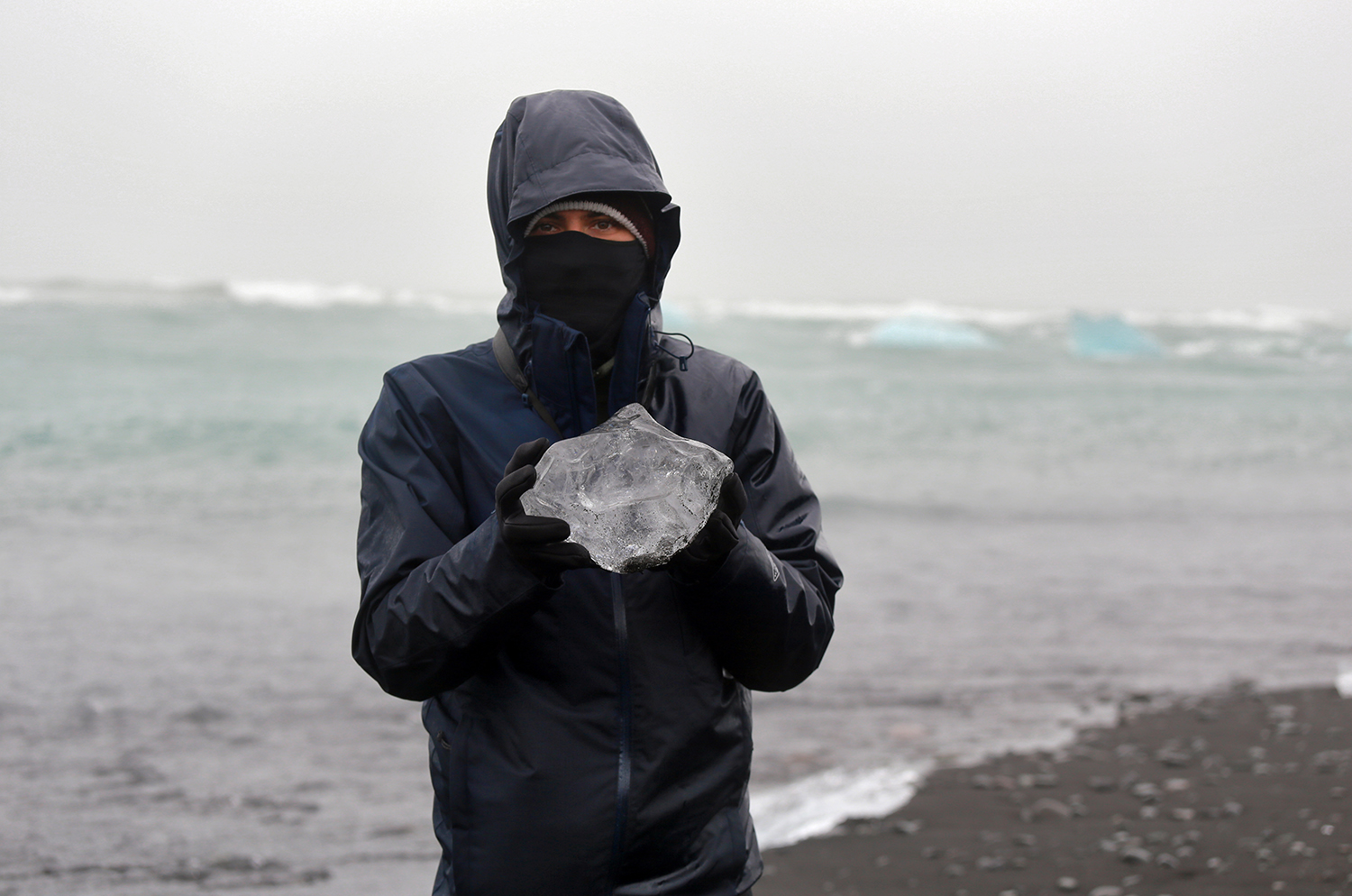
Saturation point, figuratively and literally, was reached rather quickly, and a rush to the car ensued. The wind pushed us back, the cameras were drenched, and so were we through the multitude of our layers. Nothing could keep the Icelandic autumn at bay that day. Retiring to the Dacia to catch our breath and dry out the gear, we pondered what was next. Unable to conjure up any good reason for planning further sightseeing in this weather, we deduced that we should at least briefly see the lagoon, which lay right across the road.
We first parked near Jökulsárlón, right in front of the channel that connects the lagoon with the Atlantic Ocean. The view was impressive. Immense pieces of broken off ice floated down the water, their vibrant blue color shining brightly even through the grey surroundings.
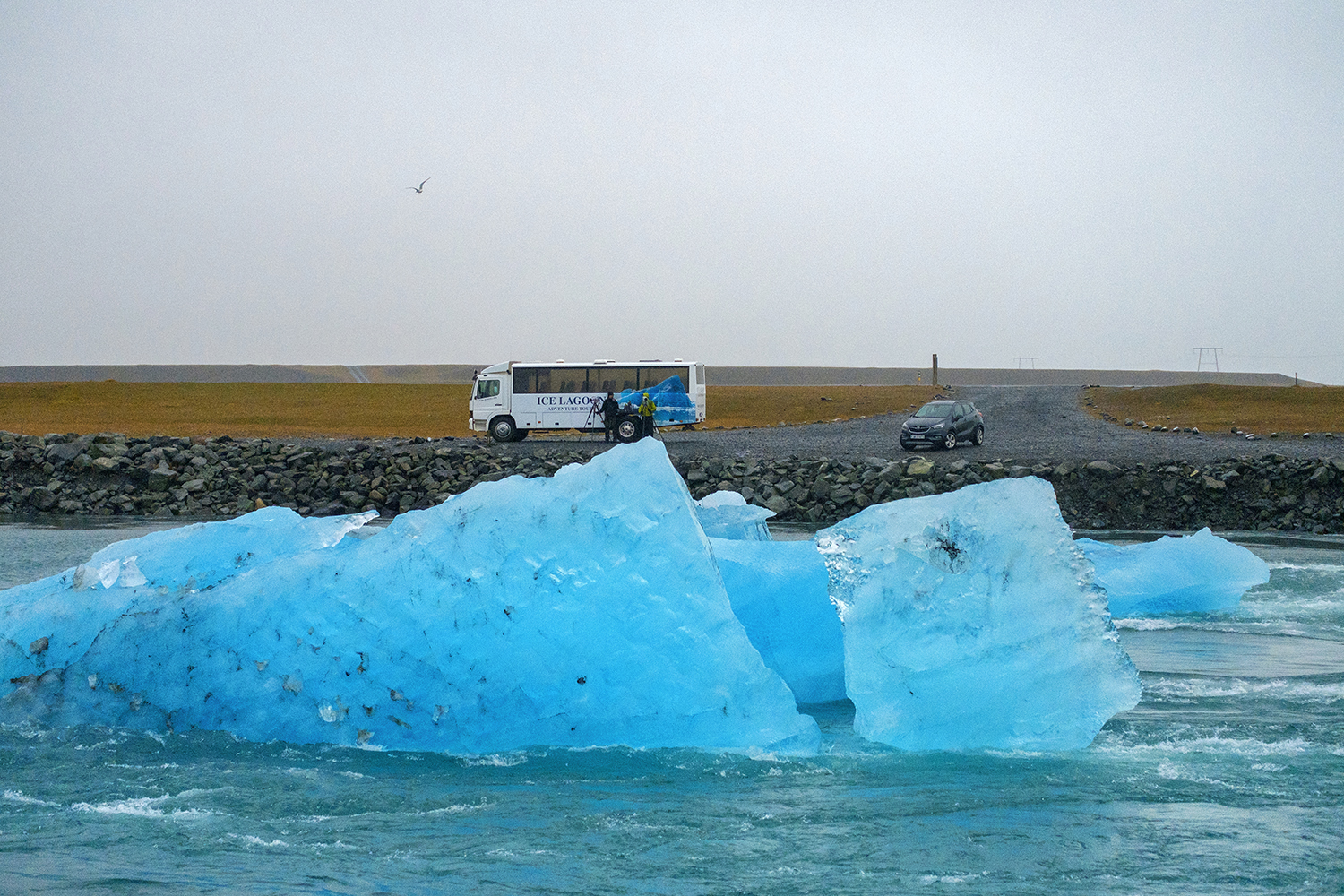
Seeing how bad the weather was, we decided that this was all that we were going to see of Jökulsárlón. There was no point crossing over the channel to the other side of the lagoon and driving north to the main body of water and ice. It just did not seem like a good time investment, with conditions being what they were. Instead, we decided to head back and investigate another tiny F-road that we had seen on our way in. It veered off in a northerly direction from the Ring Road, toward what appeared to be a sizable glacier. It was time to get our money’s worth out of the Duster again. As we headed further in on the pockmarked road, we could see the massive ice formations in the distance. When we got close enough, we began to realize that we were actually approaching the glacier, which fed the Fjallsárlón lagoon we had visited earlier in the day. Only this time we would be on the other side of it, right at the base of the formation, the origin of the stray ice.
It was hard to know what to expect. The rain had temporarily stopped and we headed out toward the rocks at the edge of the lake. Knowing the bad weather would soon return, we were starting to realize that this would be as close as we would come to seeing the glaciers in their full glory.
It is difficult to put into words what lay before our eyes. Sometimes, it is easier and wiser to let the images do all the talking:
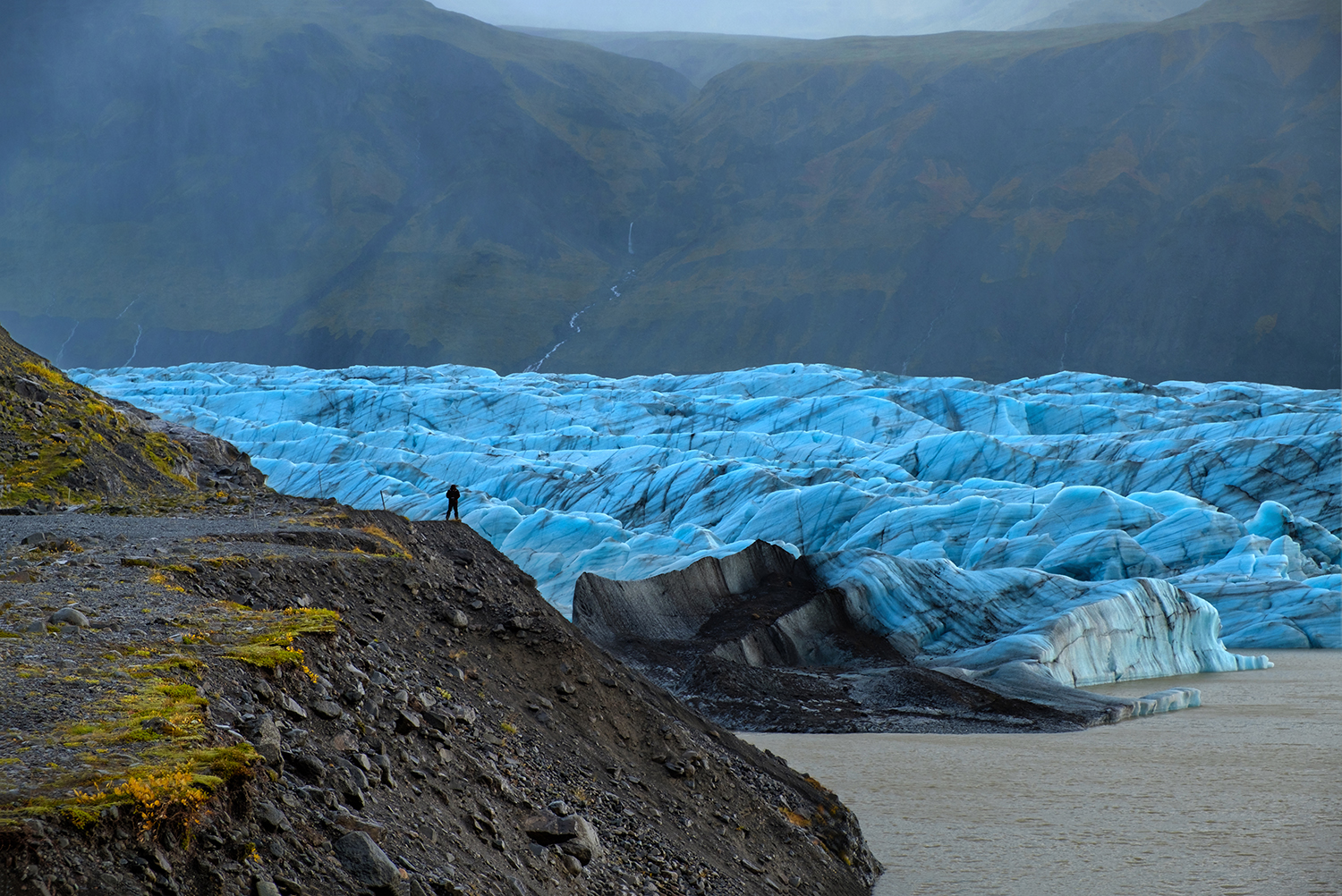
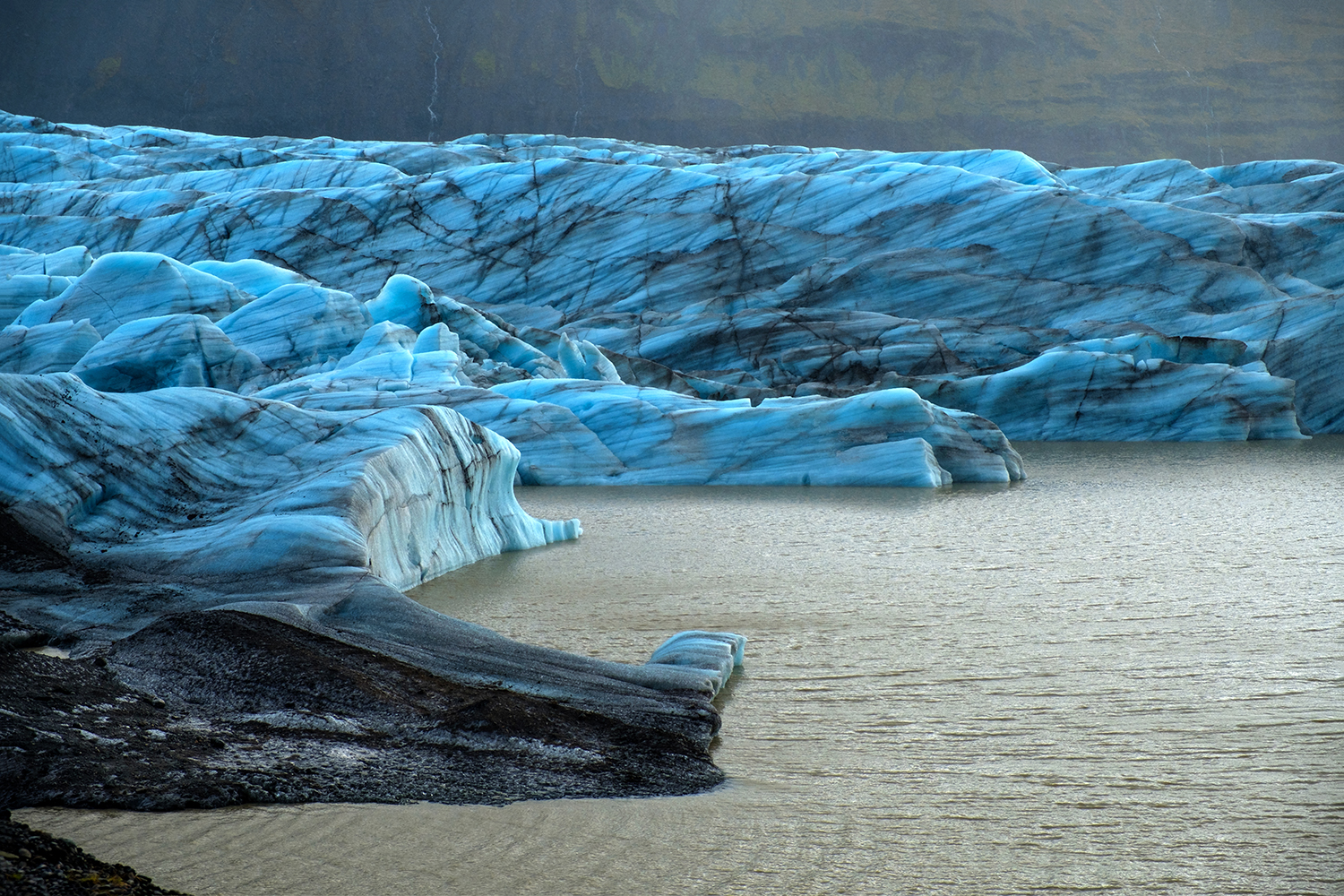
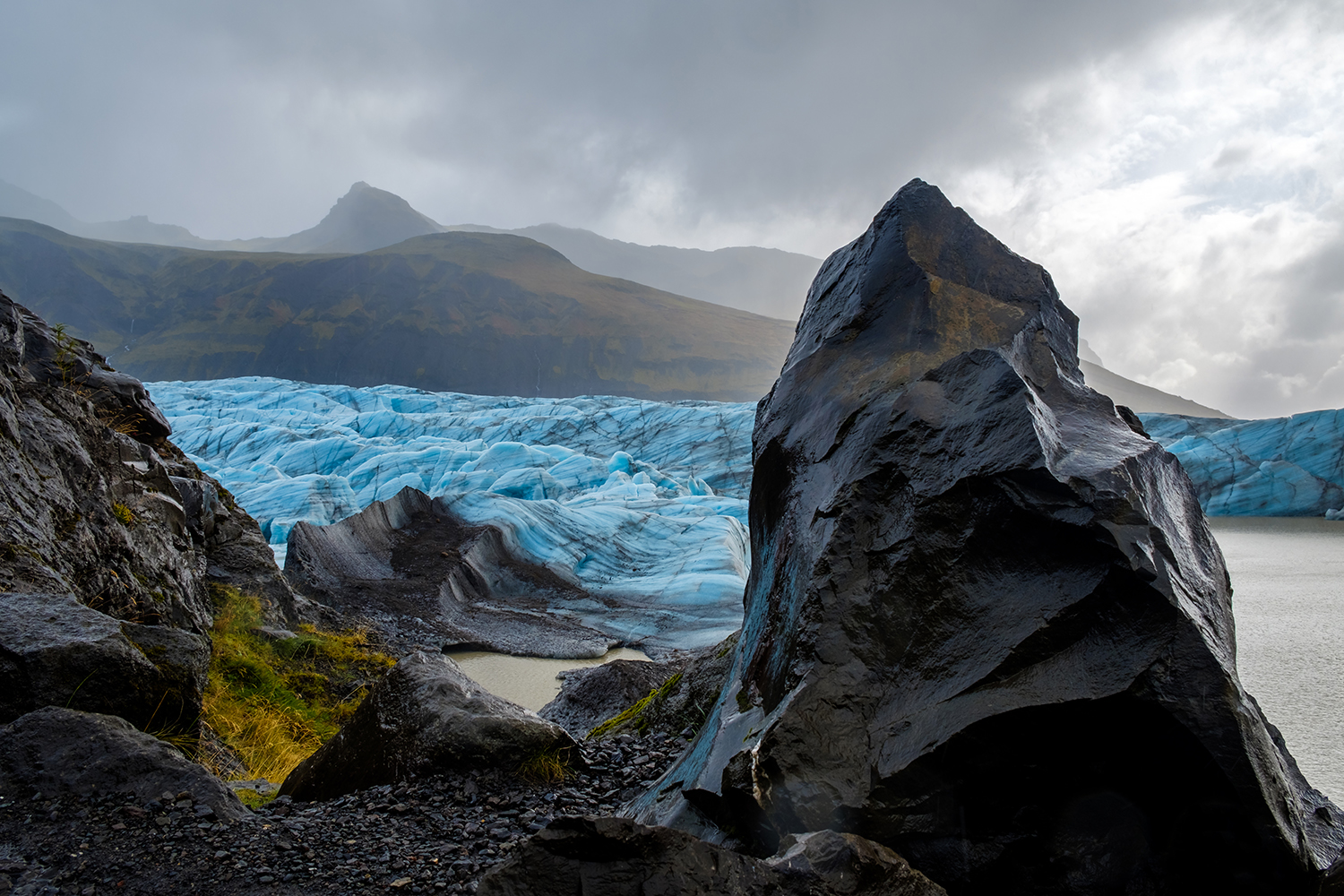
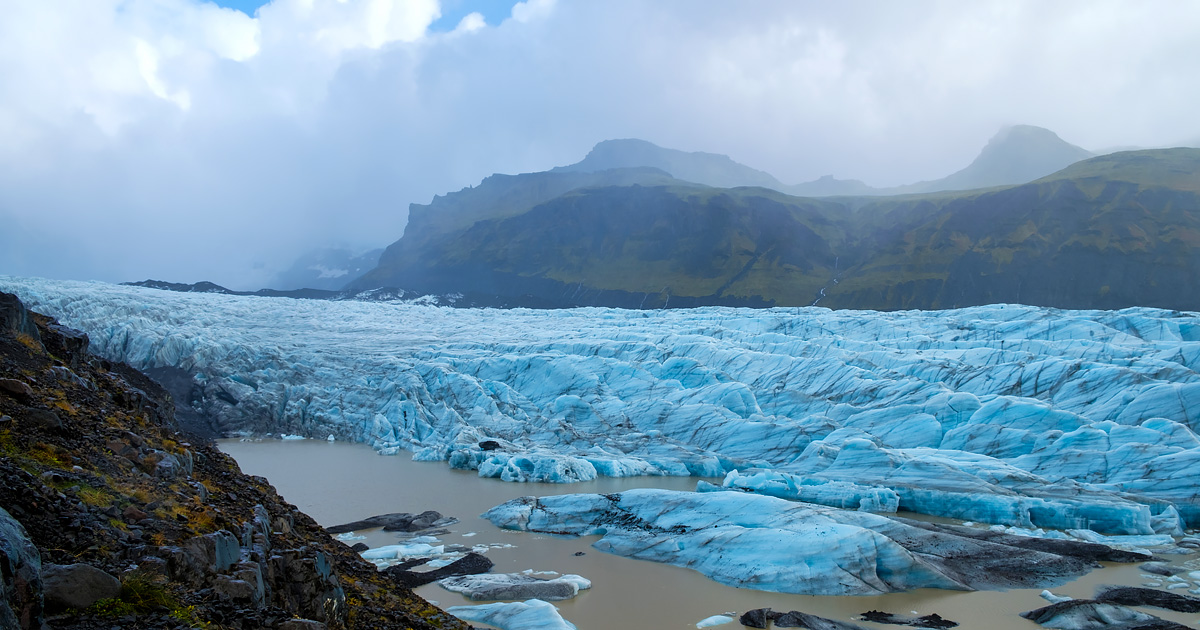
And of course, Mr. Glacier:
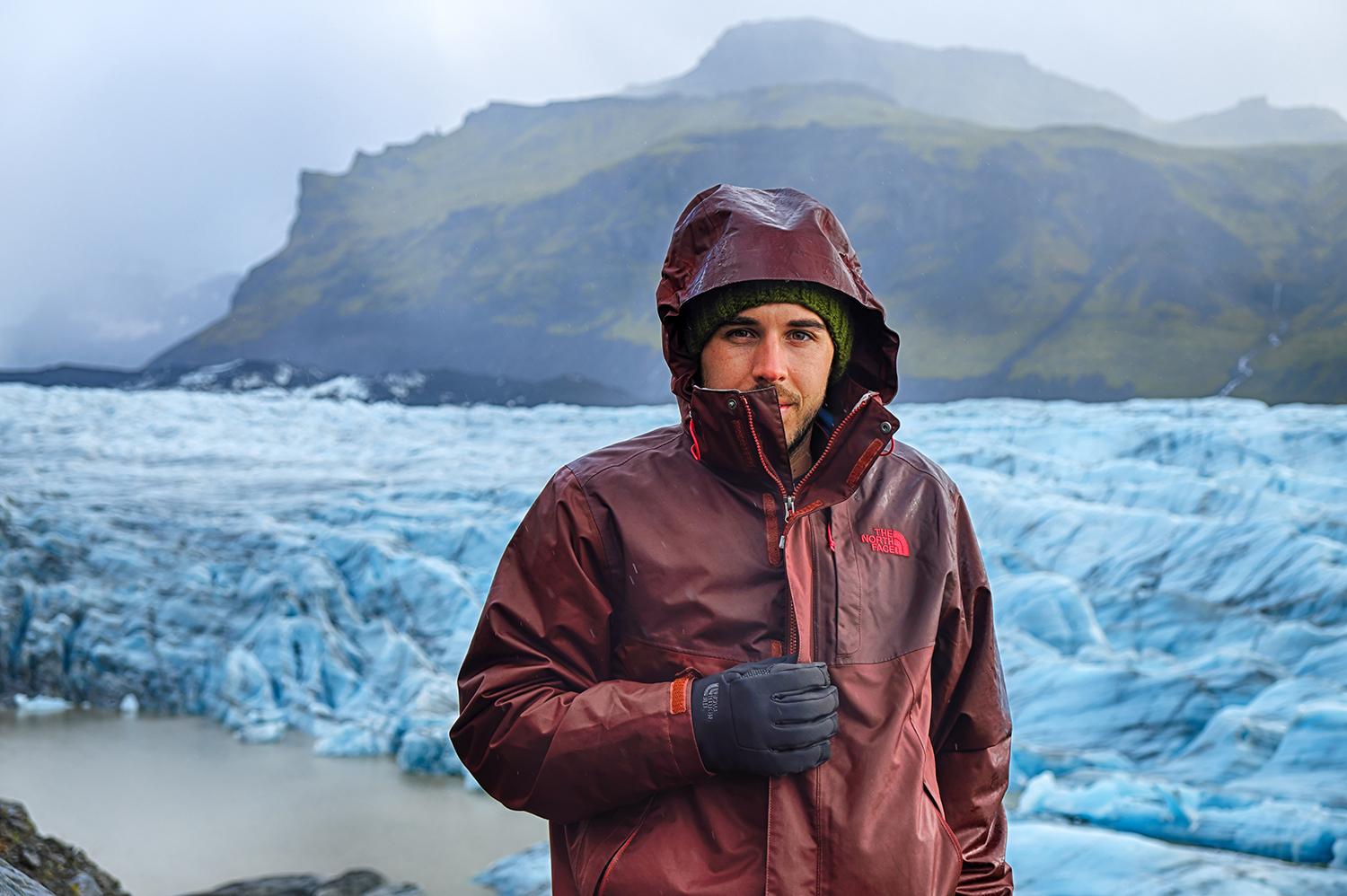
…and the Eskimo man, unmasked:
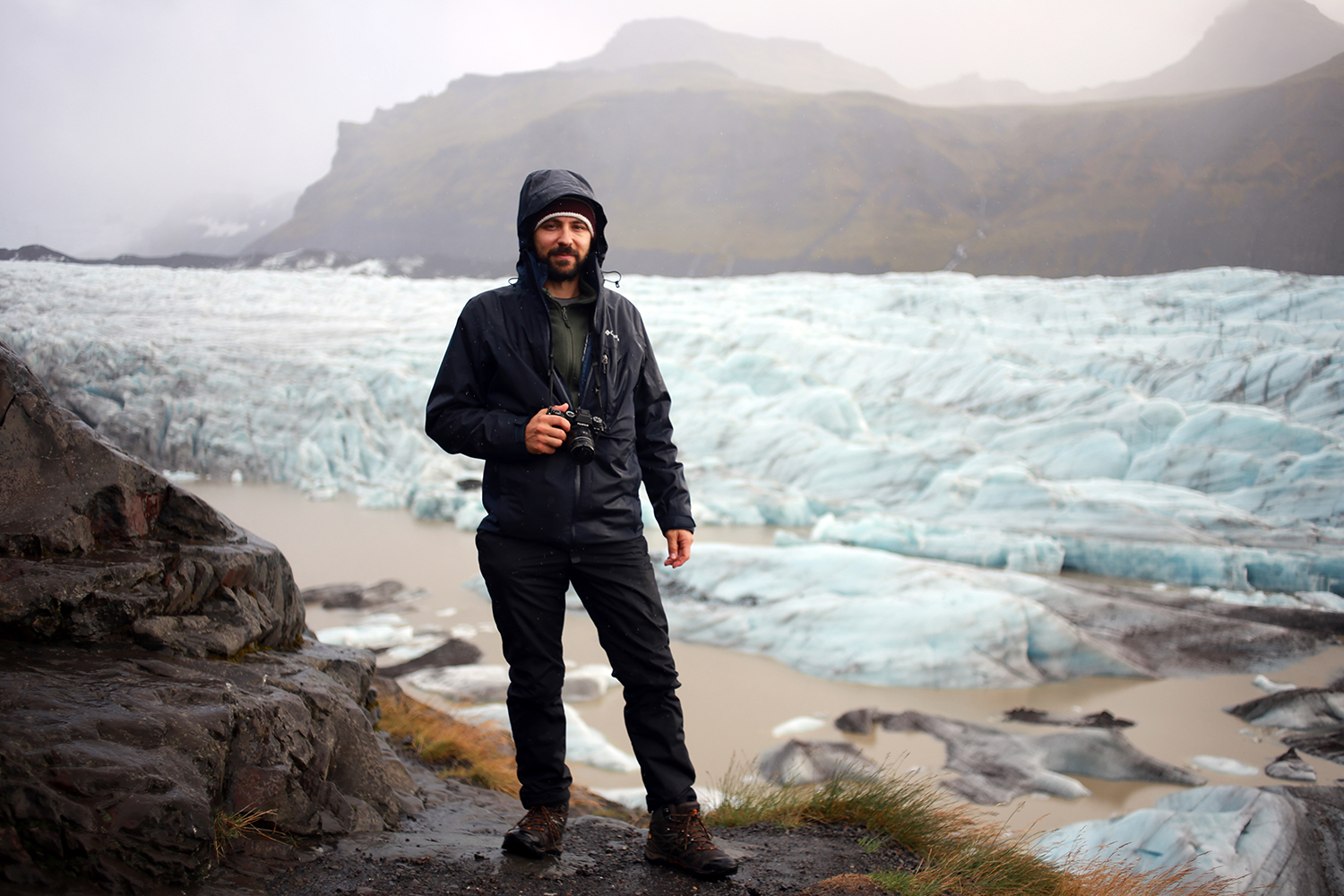
At the end of Day Four, we couldn’t complain. We had definitely managed to make the best of a bad situation and had come out of it with some amazing memories and even a few decent pictures. C’est la vie!


























